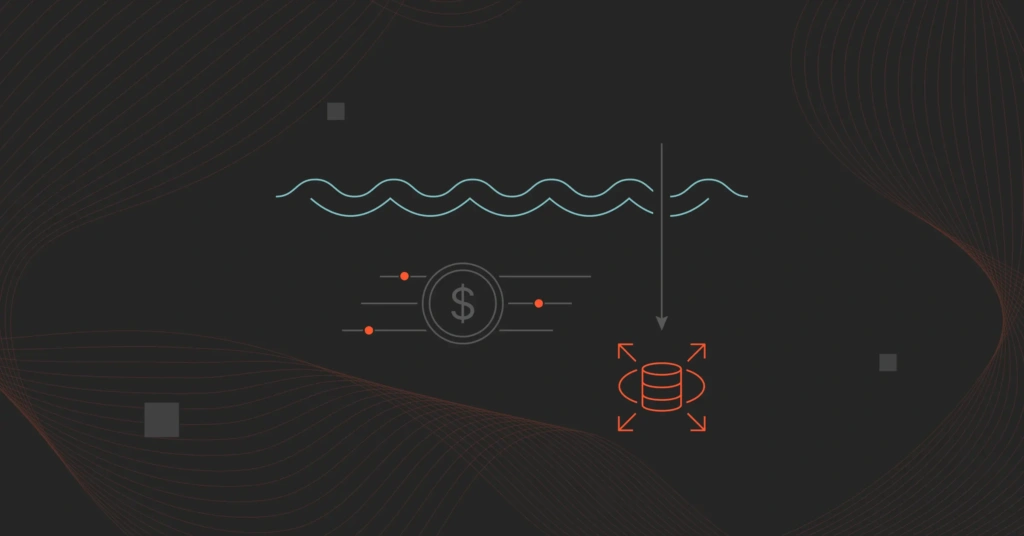AWS’ Relational Database Service (RDS) is a pivotal component for businesses leveraging cloud technology for their database management needs.
RDS simplifies a relational database’s setup, operation, and scaling, offering cost-efficiency while automating time-consuming administration tasks like hardware provisioning, database setup, patching, and backups.
However, despite its benefits, navigating the cost structure of RDS to ensure efficient spending can be a complex task. This intricacy underscores the need for robust cost optimization strategies that align with business requirements and budget constraints.
This deep dive will explore the multifaceted approach to optimizing costs with AWS RDS. We will highlight the practical strategies and insights businesses can employ to streamline their database expenses without compromising performance.
Additionally, we will shed light on how CloudZero, a platform designed to provide cloud cost intelligence, plays a crucial role in identifying and implementing cost-saving measures specific to AWS RDS.
Organizations can unlock significant savings through effective cost management practices and leveraging advanced platforms like CloudZero, turning cost optimization from a daunting challenge into a strategic advantage.
Understanding AWS RDS And Its Cost Structure
It’s crucial to delve into the specifics of AWS RDS and its cost structure to understand better where optimization opportunities lie.
RDS Cost Structure Explained
The cost of running RDS primarily depends on several factors:
Instance Costs
Based on the type (e.g., Standard, Memory Optimized) and size (e.g., db.m4.large) of the database instance. Prices vary significantly depending on the instance chosen, with options balancing between memory, CPU, and network capacity to match specific workload needs.
Storage costs
You’re billed for the storage your database consumes, which includes general SSD (gp2), Provisioned IOPS SSD (io1), and magnetic storage. Each comes with its price point and use case scenarios, impacting the overall cost depending on the storage type and amount used.
Data Transfer Costs
Outbound data transfers from RDS to the internet and between AWS services in different regions incur charges, whereas inbound data transfers and transfers within the same AWS region are generally free.
Additional Features
Costs can also accrue from optional features like provisioned IOPS (for high-performance SSD storage), RDS snapshots, and multi-AZ deployments.
Understanding this cost structure is the first step toward identifying where inefficiencies may lie and where there are opportunities for cost optimization. Similarly, analyzing an cleaning up unused or stale snapshots and efficiently managing data transfer can further reduce unnecessary expenses.
Strategies For RDS Cost Optimization
To effectively optimize RDS costs, several strategies are possible:
1. Leverage Reserved Instances
By committing to reserved instances for a one or three-year term, significant savings can be realized compared to on-demand pricing. Accurate forecasting of your long-term requirements is essential to maximizing these benefits and avoiding underutilization.
2. Right-size your instances
Regularly review your RDS instances’ performance metrics to ensure they fit your workload appropriately. Downsizing underutilized instances or scaling up during peak times can lead to substantial cost savings.
3. Optimize storage
Utilize RDS’s storage management feature to automate the deletion of outdated snapshots and monitor your storage usage. Choosing the correct storage type for your workload can also significantly impact costs.
4. Clean up unused resources
Regularly audit your AWS environment to identify and remove unused RDS instances, which incur costs even when not in active use.
5. Data transfer optimization
Minimizing data transfers, especially from AWS, can reduce costs. Use caching and content delivery networks to lessen the load on your RDS instances and decrease data transfer volumes.
By implementing these strategies, organizations can use AWS RDS more efficiently and cost-effectively.
Leveraging CloudZero For RDS Cost Optimization
Building upon the strategies for optimizing costs, leveraging a platform like CloudZero can significantly enhance these efforts, bringing a more granular and actionable insight into your AWS spending. CloudZero specializes in cloud cost intelligence, providing tools and analytics designed to uncover inefficiencies and offer recommendations tailored to your specific environment.
- Advanced analytics for cost optimization. CloudZero goes beyond basic monitoring to analyze your RDS usage deeply. It identifies patterns that could indicate overprovisioning, underutilization, or opportunities to shift to more cost-effective resources. This level of detail allows for precise adjustments, ensuring you’re not overspending on your RDS instance.
- Custom recommendations. Unlike generic advice, CloudZero offers personalized recommendations for your RDS setup. By analyzing your usage and cost data, CloudZero can suggest specific instance types, storage configurations, or reserved instance purchases that align with your unique needs, maximizing your savings.
- Automated cost monitoring and alerts. With CloudZero, you can set up customized cost anomaly alerts for unexpected spikes in RDS costs or when usage deviates from typical patterns. This proactive approach allows you to address issues promptly, preventing minor inefficiencies from turning into significant expenses.
- Integration with development processes. CloudZero is designed to seamlessly integrate into your development lifecycle, providing insights directly to engineers. This integration helps ensure that cost considerations are part of the decision-making process, fostering a culture of cost awareness and optimization across your organization.
By leveraging CloudZero alongside the RDS cost optimization strategies discussed, businesses can achieve a more refined, effective approach to managing their RDS expenses.
This combination of targeted strategies and advanced analytics enables organizations to optimize their cloud resources, ensuring they get the best possible value from their AWS investment.
Conclusion
Navigating RDS costs efficiently requires a blend of strategic planning, ongoing monitoring, and the utilization of advanced platforms like CloudZero.
By adopting the outlined cost optimization strategies and leveraging CloudZero’s insights, businesses can significantly reduce their RDS expenses without compromising performance and scalability.
Embracing these practices ensures that your organization remains agile, cost-effective, and ready to harness the full potential of cloud computing.
Don’t let RDS costs spiral out of control. Start by conducting a thorough audit of your RDS usage and expenses. Then, explore how CloudZero can provide you with the actionable insights needed to optimize your AWS spending.
Visit CloudZero’s website today and  to begin your journey towards more efficient cloud cost management.
to begin your journey towards more efficient cloud cost management.








